50 Years of NIOSH Construction Safety and Health Research
Posted on by
Construction is a high hazard industry with high rates of illnesses and injuries. The construction industry comprises not only a wide range of activities involving residential and commercial building construction, but also heavy and civil engineering construction, such as water and sewer lines, highways, and bridges. Specialty trades within the sector include masonry, roofing, plumbing, electrical, drywall, painting, and more. [1] Construction also encompasses renovation and demolition of existing structures, which can expose workers to many unknown safety and legacy health hazards such as asbestos and lead.[2]
Construction jobs are dangerous, resulting in the highest number of fatalities and some of the highest fatality rates of all industries. In 2019, the U.S. construction sector employed approximately 11.4 million workers with numbers still rising after employment in the sector declined during the 2007-2008 economic recession. Over 90% of construction firms in the United States employ 20 or fewer employees. These small businesses often do not have resources for safety and health professionals and programs and they have a fatality rate that is approximately three times that of larger contractors. [3],[4] Nearly 30% of the workforce is of Hispanic origin. [2]
This year marks the 50th anniversary of NIOSH and the 31st year of the NIOSH Construction Program. In 1970 when NIOSH was created under the Occupational Safety and Health (OSH) Act, NIOSH did not have a formal construction program. In its early years, NIOSH researchers addressed relevant construction issues through individual projects and activities overseen by division management. Construction was included in many different surveillance activities and fatality investigations. Ongoing construction-related research included development of analytical methods and engineering controls for measuring and controlling construction hazards, such as silica and asphalt fumes.
In 1990, NIOSH launched its Construction Program when Congress authorized and provided NIOSH with $1 million in funds to “develop a comprehensive prevention program directed at health problems affecting construction workers.” Subsequently, Congress increased the budget the next four years, 1991–1995, to nearly $4.0 million to support and build the program.
Congressional funding allowed NIOSH to develop a cross-institute construction safety and health research program with three components: NIOSH-wide intramural research and surveillance, a National Construction Center cooperative agreement, and extramural research conducted at universities. From its inception, the program has partnered with industry and labor to address construction-related injuries, illnesses and fatalities through a multidisciplinary ‘research-to-practice’ approach relying on burden, need, and impact to identify and define research priorities. The Construction Program has also worked closely with the OSHA, Directorate of Construction and actively participated on the Advisory Committee on Construction Safety and Health (ACCSH) and the OSHA Construction Alliance Roundtable programs.
In 1990, CPWR—The Center for Construction Research and Training (CPWR) was awarded its first multi-year cooperative agreement with NIOSH as the National Construction Center. CPWR is a non-profit (501(c)(3)) dedicated to reducing injuries, illnesses, and fatalities in the construction industry through research, training, and service programs conducted in partnership with industry stakeholders, health and safety professionals, academics, and key government agencies. CPWR was created by the North American Building Trades Unions (NABTU), which is part of the American Federation of Labor and Congress of Industrial Organizations (AFL-CIO). For the past 31 years, CPWR and NIOSH have closely collaborated and helped to facilitate partnerships to make the industry safer and healthier for its workers.
The NIOSH Construction Program works closely with stakeholders on the NORA Construction Sector Council. The council is comprised of academics, trade associations, employer groups, labor unions, insurance companies, NIOSH, other federal and state agencies, CPWR, and numerous stakeholders with key interests and activities in the construction sector.
Key Areas and Accomplishments
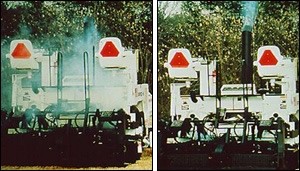
A seminal NIOSH product involving construction sector research was the Engineering Control Guidelines for Hot Mix Asphalt Pavers that was published in 1997. This document resulted from the collaborative efforts of industry, labor, and government to protect the health of workers exposed to asphalt fumes during paving operations. The guidelines provided recommendations for use of engineering controls that reduce highway asphalt fumes at the source (see image at right), and industry partners agreed to make the controls standard on new equipment. [5]
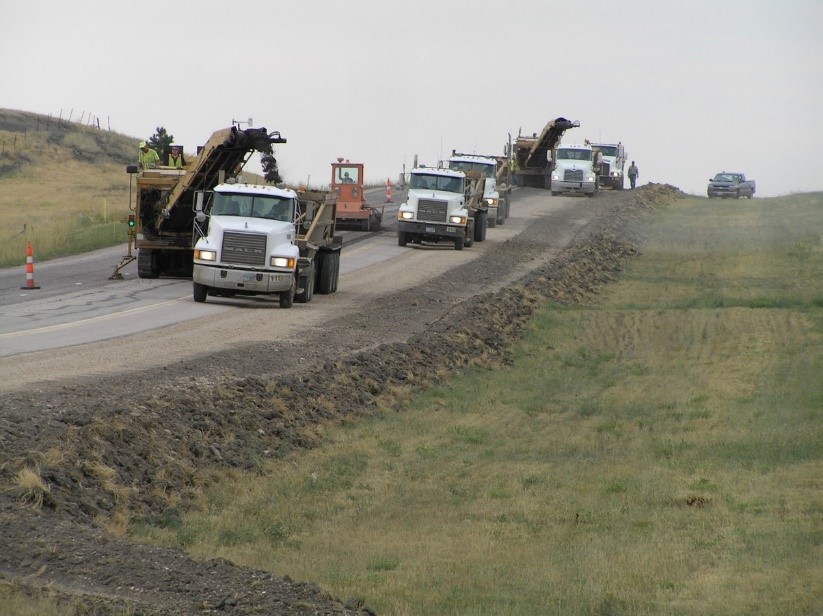
Respirable crystalline silica (RCS) exposure is associated with the development of silicosis, lung cancer, chronic obstructive pulmonary disease, and others. NIOSH conducts research to help understand how silica risks can be mitigated or removed from the workplace, developing engineering controls (e.g., using local exhaust ventilation in tuckpointing and concrete drilling operations) and other controls (e.g., spray misting systems installed on crushing machines and conveyors) (See Figure on Asphalt Milling). NIOSH and its partners also conduct extensive research around assessment to ensure the availability of accurate methods for measuring RCS.[6] A significant portion of NIOSH research on sampling and analytic methods, as well as engineering controls is referenced in the 2016 revised Occupational Safety and Health Administration (OSHA) silica standard for construction. [7] Table 1 of the standard relied extensively on the NIOSH engineering control research for RCS, listing 18 common construction equipment or tasks and effective dust control methods for each (i.e., masonry saws, dowel drilling, milling machines, etc.).
Highway and street construction workers are at a significant risk of fatal and serious nonfatal injuries while working in and around road construction jobsites. Too often, they suffer a struck-by injury which is the leading cause of nonfatal injuries and the second most common cause of fatalities among construction workers. These injuries occur when a worker is struck by a moving vehicle, equipment, or by a falling or flying object. [8],[9]
NIOSH researchers developed a method for measuring areas around construction vehicles and equipment not seen from the operator’s position (blind areas) and then designed diagrams for those areas. They worked with construction laborers and others to develop internal traffic control plans, which reduce the risk of construction vehicles and equipment striking workers on foot, including runovers and backovers. [10] Additionally, NIOSH developed, tested, and patented a proximity warning system, which alerts equipment operators when they are nearing contact with another object. [11],[12] State departments of transportation have implemented the warning devices in their highway building and improvement operations. In 2020 NIOSH and its partners on the NORA Construction Sector Council held the first annual National Stand-down to Prevent Struck-by Incidents. The event occurred during the first day of National Workzone Awareness Week.
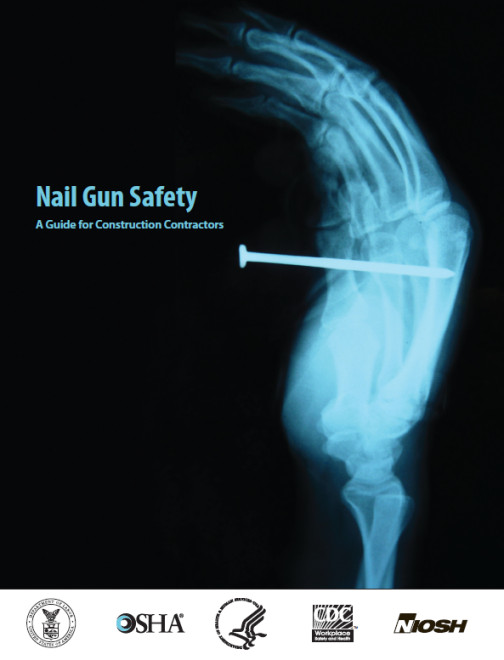
Nail guns are also responsible for a large number of struck-by injuries to residential construction workers and the public. There are nearly 37,000 emergency room visits per year related to nail gun use including puncture wounds to the hands and fingers and sometimes much more serious injuries. NIOSH researchers studied this issue and found that nail gun trigger design was critical to reducing the number of injuries by as much as 50%. [13],[14] Based on this research, NIOSH published the findings and subsequently cobranded a new guidance document with OSHA recommending training and that sequential triggers be used.
Working at height is dangerous, and for decades, falls have been the leading cause of death and serious injury in construction. NIOSH studies aimed to improve safety in this area involve innovative guardrail systems, ladders, mast climbers, aerial lifts, and fall protection harnesses. In 2009, a new sizing structure was released for fall-arrest harnesses to better fit the diverse sizes and shapes of construction workers, for both men and women. [15],[16]
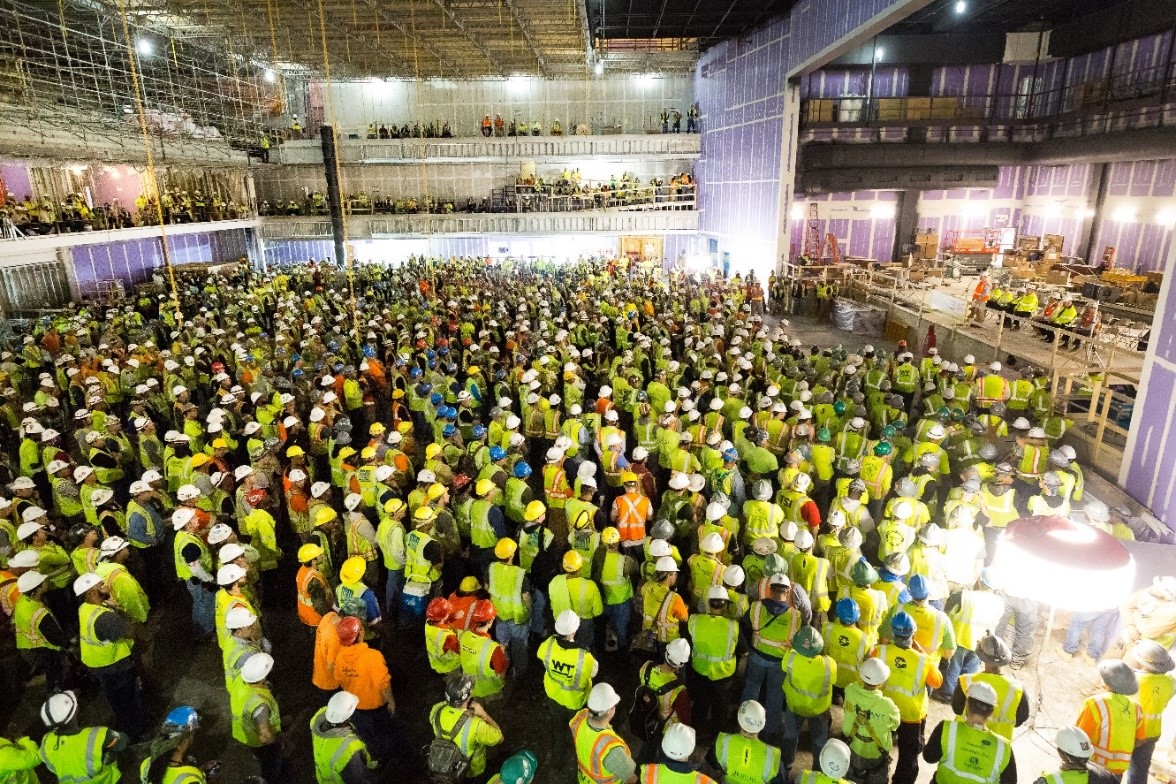
Misjudging the ladder angle is a key risk factor for preventable falls from ladders. As a result, in 2013 NIOSH researchers designed and developed the NIOSH Ladder Safety App for smart phones. [17]
During the COVID-19 Pandemic construction workers were deemed essential. Questions were raised about the risks construction workers face because of ongoing community disease transmission. Construction workers could have an increased risk of exposure to COVID-19 and other diseases, particularly when work tasks required them to enter homes or occupied worksites where they might come into close contact with other workers or members of the public. NIOSH developed guidance and other materials for construction workers to protect themselves and slow the spread of COVID-19. In addition to the new guidance, NIOSH partnered with CPWR to host over 25 webinars that reached tens of thousands of live and on demand viewers on a wide range of pandemic topics relevant to key construction stakeholders.[18]
NIOSH has taken a proactive approach to address many construction safety and health issues by identifying partnership opportunities; and applying practical approaches to improve safety, health, and well-being outcomes. The NIOSH Office of Construction Safety and Health is working across disciplines to ensure that the construction 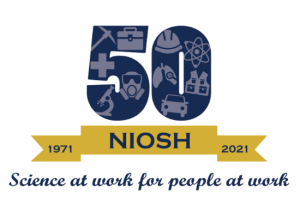 industry is prepared for the future changes, while promoting innovative solutions.
industry is prepared for the future changes, while promoting innovative solutions.
This blog is part of a series for the NIOSH 50th Anniversary. Stay up to date on how we’re celebrating NIOSH’s 50th Anniversary on our website.
Scott Earnest, PhD, PE, CSP, is the Associate Director for Construction Safety and Health.
Douglas Trout, MD, MHS, is Deputy Director, Office of Construction Safety and Health at NIOSH.
J’ette Novakovich, PhD, MS, is a Writer-Editor in the Division of Science Integration.
CDR Elizabeth Garza, MPH, CPH, is Coordinator for the Construction Program in the Office of Construction Safety and Health.
References
[1] Ringen, K., J. Seegal and A. England (1995). “Safety and health in the construction industry.” Annual review of public health 16(1): 165-188.
[2] CPWRb. The Construction Chart Book. 6th Edition. The Center for Construction Research and Training (CPWR). 2018. Available from: https://www.cpwr.com/wp-content/uploads/publications/The_6th_Edition_Construction_eChart_Book.pdf
[3] NIOSH, (2015). Overlapping vulnerabilities: the occupational safety and health of young workers in small construction firms. By Flynn MA (No. 2015-178). Cunningham TR, Guerin RJ, Keller B, Chapman LJ, Hudson D, Salgado C. Cincinnati, OH: US Department of Health and Human Services, Centers for Disease Control and Prevention, National Institute for Occupational Safety and Health, DHHS (NIOSH) Publication.
[4] Dong, X. S., Wang, X., Katz, R., Trahan Cain, C., Rinehart, R. (2018). Fatal injuries among small construction establishments. Available at: publications_Quarter3-QDR-2018_0.pdf (cpwr.com)
[5] NIOSH [1997]. Engineering control guidelines for hot mix asphalt pavers. By Mead K, Mickelson L. Cincinnati, OH: U.S. Department of Health and Human Services, Centers for Disease Control and Prevention, National Institute for Occupational Safety and Health, DHHS (NIOSH) Publication No. 97-105, https://www.cdc.gov/niosh/docs/97- 105/default.html
[6] NIOSH [1996]. Preventing silicosis and deaths in construction workers. By Linch KD, Groce DW, Musgrave KJ, Jajosky RA, Short SR, Parker JE. Cincinnati, OH: U.S. Department of Health and Human Services, Centers for Disease Control and Prevention, National Institute for Occupational Safety and Health, DHHS (NIOSH) Publication No. 96- 112, https://www.cdc.gov/niosh/docs/96-112/default.html.
[7] OSHA (2016). Occupational exposure to respirable crystalline silica. Final rule. 29 CFR Parts 1910, 1915, and 1926. [Docket No. OSHA–2010–0034]. RIN 1218–AB70. Washington, DC: U.S. Department of Labor, Occupational Safety and Health Administration.
[8] CPWRa. Fatal Injuries at Road Construction Sites among Construction Workers. 2018 Available from: https://www.cpwr.com/wp-content/uploads/publications/publications_Quarter2-QDR-2018.pdf
[9] Romano, N., D. Fosbroke and T. Ruff (2008). “Improving Work Zone Safety.” Professional Safety 53(4): 46.
[10] NIOSH (2001). Building safer highway work zones: measures to prevent worker injuries from vehicles and equipment. Cincinnati, OH: U.S. Department of Health and Human Service, Centers for Disease Control and Prevention, National Institute for Occupational Safety and Health, https://www.cdc.gov/niosh/docs/2001-128/pdfs/2001-128.pdf.
[11] Pratt, S. G., Fosbroke, D.E., and Marsh, S.M. (2001). Building Safer Highway Work Zones: Measures to Prevent Worker Injuries from Vehicles and Equipment, Department of Health and Human Services: CDC, NIOSH, 5-6.
[12] Ruff, T. (2006). “Evaluation of a radar-based proximity warning system for off-highway dump trucks.” Accident Analysis & Prevention 38(1): 92-98.
[13] Lipscomb, HJ, Nolan J, Patterson D, Dement JM. (2010). Surveillance of nail gun injuries by journeyman carpenters provides important insights into experiences of apprentices. New Solut 20(1):95-114.
[14] Lipscomb HJ, Schoenfisch AL. (2015). Nail gun injuries treated in U.S. emergency departments, 2006—2011: Not just a worker safety issue. Am J Ind Med 58(8):880-885.
[15] Hsiao H, Whitestone J, Kau TY (2007). Evaluation of fall arrest harness sizing schemes. Hum Factors 43(3):447-464
[16] Hsiao H, Turner N, Whisler R, Zwiener J (2012). Impact of harness fit on suspension tolerance. Hum Factors 54(3):346–357.
[17] Hsiao H, Simeonov P, Pizatella T, Stout N, McDougall V, Weeks J (2008). Extension ladder safety: solutions and knowledge gaps. Int J Ind Ergon 38(11):959–965.
[18] Pasco RF, Fox SJ, Johnston SC, Pignone M, Meyers LA. Estimated Association of Construction Work With Risks of COVID-19 Infection and Hospitalization in Texas. JAMA Netw Open. 2020 Oct 1;3(10):e2026373. doi: 10.1001/jamanetworkopen. 2020.26373. PMID: 33119111.
Posted on by

